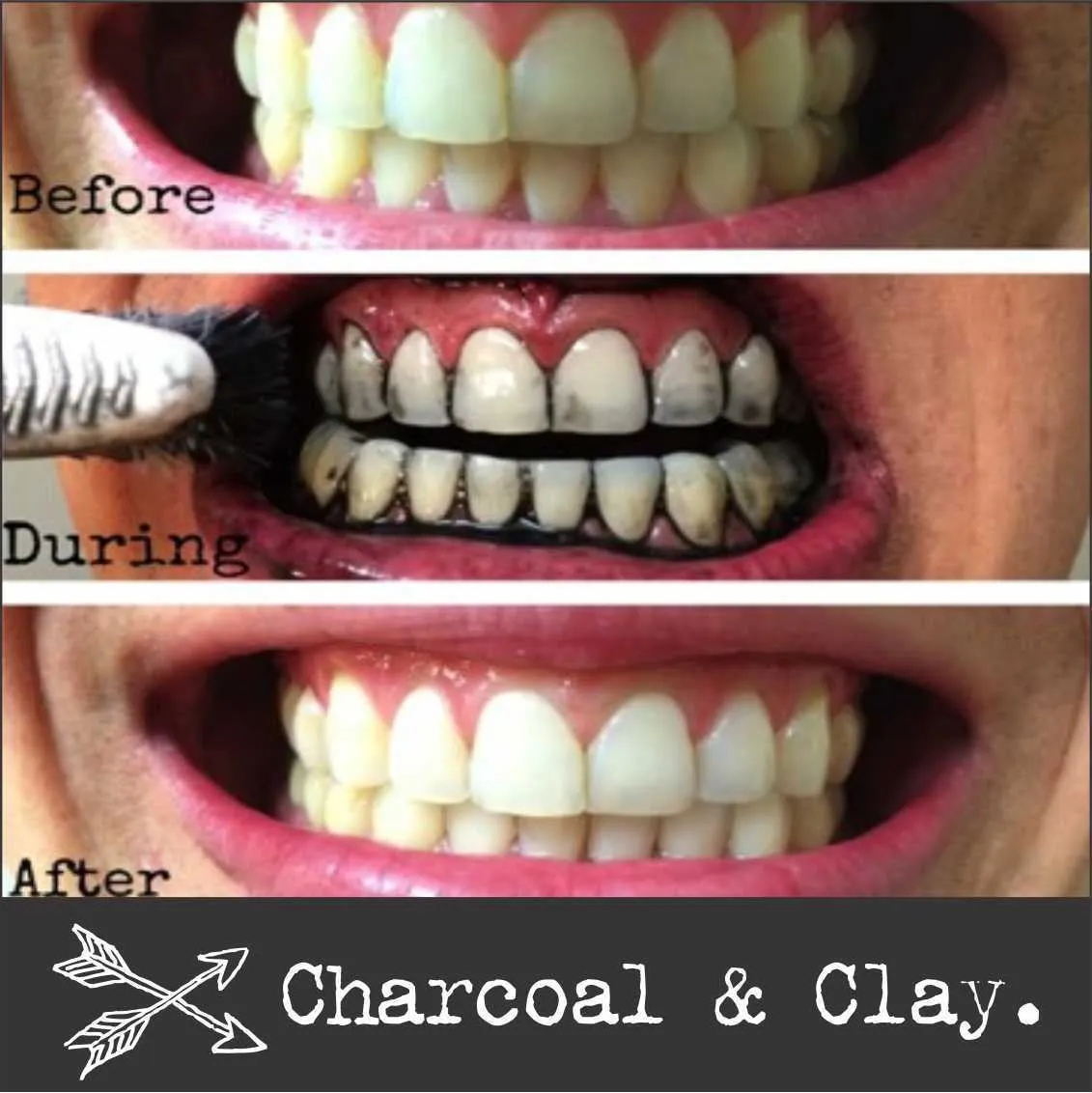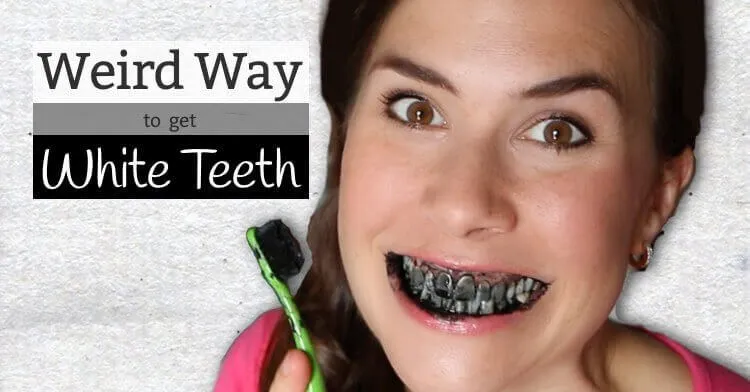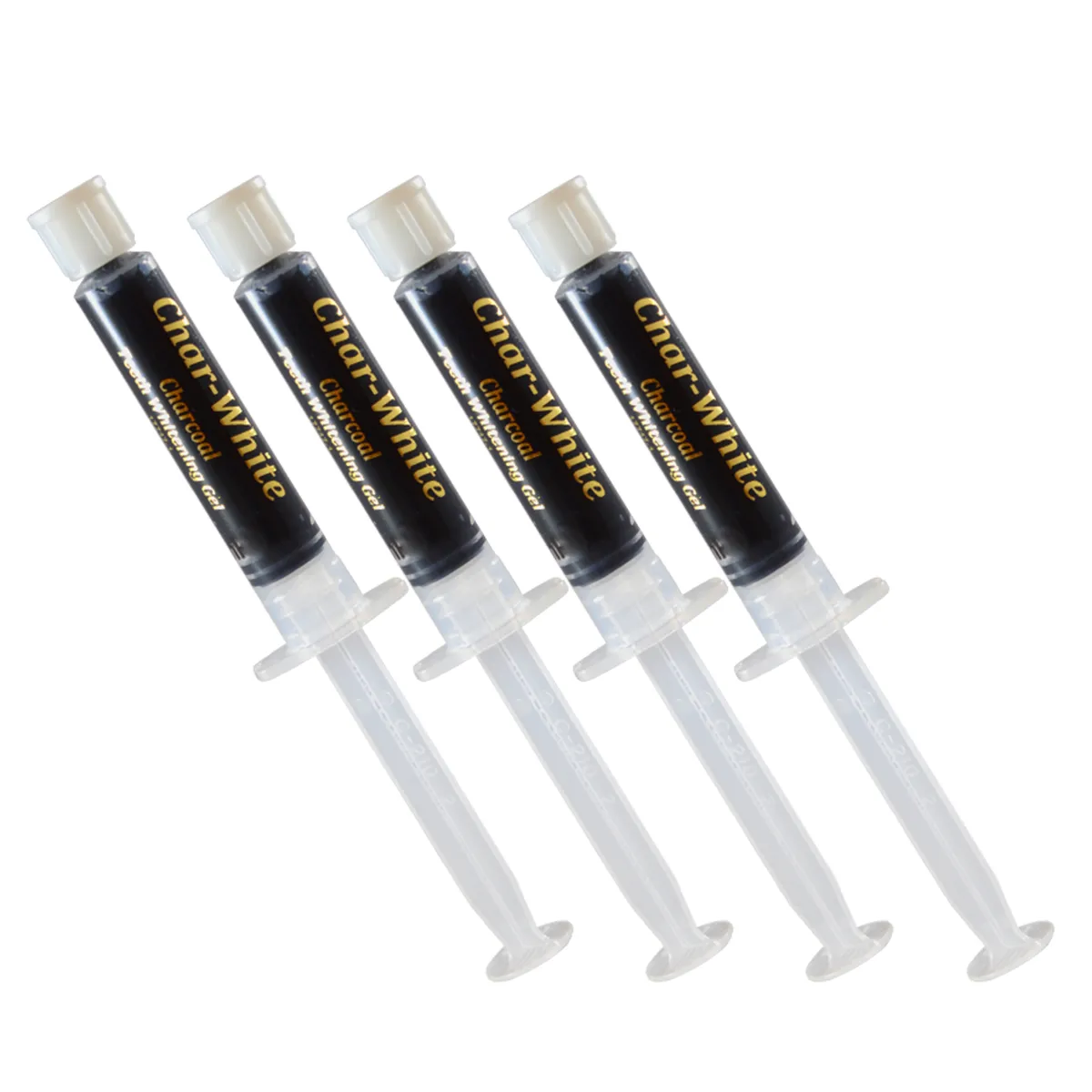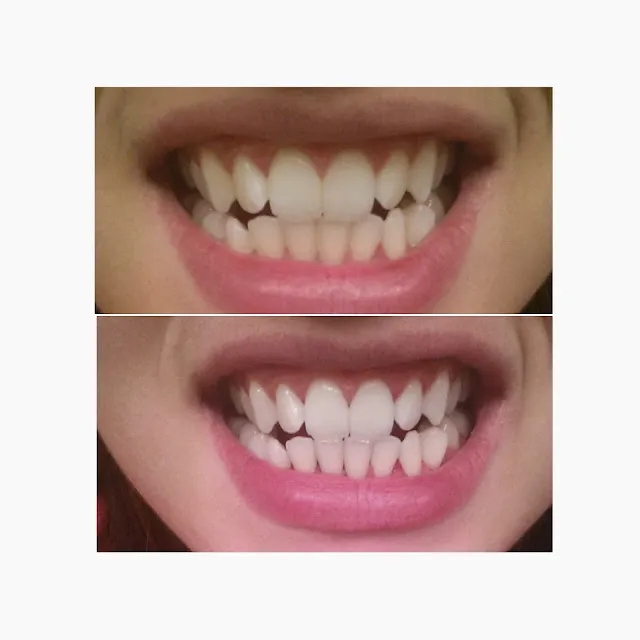What Is Charcoal Teeth Whitening?
Charcoal teeth whitening has become a popular trend, offering a natural alternative to conventional teeth whitening methods. But what exactly is it? At its core, it involves using activated charcoal, a fine black powder derived from sources like coconut shells, wood, or other natural materials. This charcoal undergoes a special process called activation, which increases its porosity. This enhanced porosity is the key to its purported teeth-whitening abilities. Activated charcoal is marketed as a way to remove stains and brighten your smile, all without the harsh chemicals often found in commercial products. Many people are turning to this method in search of a more holistic approach to oral care, hoping to achieve a brighter smile while minimizing exposure to artificial ingredients. However, it is important to understand how it works, its benefits, and potential drawbacks before incorporating it into your routine. This article will explore everything about charcoal teeth whitening, providing a comprehensive overview to help you make an informed decision.
The Science Behind Activated Charcoal
Understanding the science behind activated charcoal is crucial to grasping how it can potentially whiten teeth. The activation process is what sets activated charcoal apart from regular charcoal. It involves heating the charcoal at high temperatures, often with the addition of gases like oxygen or steam. This process creates numerous small pores within the charcoal structure, dramatically increasing its surface area. This vast surface area is the foundation of activated charcoal’s adsorptive properties. Adsorption, which is often confused with absorption, is a surface phenomenon where molecules of a substance adhere to the surface of another. In the case of activated charcoal, the porous structure acts like a magnet, attracting and trapping particles such as stains and toxins. This is why it is commonly used in various applications, including water filtration and, of course, oral care. The adsorptive properties of activated charcoal are believed to play a significant role in its ability to remove stains from teeth. The charcoal adheres to stain-causing particles and can be rinsed away, potentially leaving a brighter smile. However, more research is needed to fully understand and validate all of its mechanisms.
How Activated Charcoal Works to Whiten Teeth

The primary mechanism by which activated charcoal is thought to whiten teeth is through the removal of surface stains. Stains can accumulate on the enamel of your teeth from various sources, including coffee, tea, wine, and certain foods. These stains can make teeth appear dull or discolored. Activated charcoal, with its porous structure and adsorptive properties, works by attracting and binding to these stain molecules. When you brush with activated charcoal, it helps to lift and remove these surface stains. The charcoal particles gently scrub the teeth, effectively exfoliating the enamel and removing the build-up. The abrasive nature of charcoal, however, is a double-edged sword. While it can effectively remove stains, it can also potentially wear down enamel if used improperly. This is why it is crucial to use charcoal carefully and not to overbrush. The effectiveness of charcoal teeth whitening can vary depending on the type and severity of the stains, as well as the frequency of use. It is generally considered to be most effective for removing surface stains and may not be as effective for deeper stains that are ingrained within the tooth structure.
Benefits of Charcoal Teeth Whitening
Charcoal teeth whitening offers several potential benefits that make it appealing to many. First and foremost is its natural approach. Many people prefer using a natural product, avoiding the harsh chemicals often found in traditional whitening products. Activated charcoal is a natural substance, making it a potentially safer option for those concerned about chemical sensitivities. Another benefit is stain removal. As we’ve discussed, charcoal is effective at removing surface stains caused by common foods and drinks. This can lead to a noticeably brighter smile. Cost-effectiveness is also a factor. Compared to professional teeth whitening treatments or expensive whitening strips, activated charcoal is a budget-friendly option. It’s readily available and typically inexpensive, making it accessible to a wider range of people. Additionally, some proponents suggest that activated charcoal can help freshen breath and improve oral hygiene. By removing bacteria and other impurities, charcoal might contribute to a cleaner mouth and a fresher feeling. However, it is important to note that the effectiveness of these benefits can vary from person to person.
How to Use Charcoal for Teeth Whitening
Using activated charcoal for teeth whitening is relatively straightforward, but proper technique is essential for achieving the best results and minimizing potential risks. Start by selecting a high-quality activated charcoal product. These come in various forms, including powder, toothpaste, and tablets. Make sure the product is specifically designed for oral use. Wet your toothbrush and dip it into the activated charcoal powder or apply the charcoal toothpaste. Brush your teeth gently in small, circular motions for about two minutes. Be sure to reach all surfaces of your teeth. Avoid applying too much pressure, as excessive brushing can damage the enamel. After brushing, rinse your mouth thoroughly with water until all the black residue is removed. You may need to repeat the rinsing process several times to ensure your mouth is clean. Some people choose to follow up with their regular toothpaste to ensure their mouth is completely clean and to add fluoride. It is also recommended to use charcoal teeth whitening a few times a week, not daily. Overuse can lead to enamel erosion and increased tooth sensitivity. Be patient and consistent, and you may start to see results within a few weeks.
Choosing the Right Charcoal Product

Selecting the right activated charcoal product is crucial to ensure both effectiveness and safety. With various products available on the market, it’s important to choose wisely. The first thing to look for is the source of the activated charcoal. As mentioned, it is typically derived from sources like coconut shells or wood. Products made from coconut shells are generally considered to be of high quality. Check the ingredient list and ensure that the product does not contain any additives or artificial ingredients that could be harmful. Look for products that are specifically formulated for oral use. Also, consider the form of the product. Activated charcoal is available as a powder, toothpaste, or in tablet form. Powders can be slightly more abrasive and allow for more control over the concentration, but toothpaste is more convenient for everyday use. Tablets are less common but can be a convenient option for travel. Read reviews from other users before making your purchase. This can provide insights into the product’s effectiveness, taste, and potential side effects. Additionally, consult with your dentist before incorporating activated charcoal into your routine. They can assess your oral health and offer personalized recommendations.
Step-by-Step Guide to Using Charcoal
To maximize the benefits and minimize the risks of charcoal teeth whitening, follow this step-by-step guide. First, gather your supplies: activated charcoal (powder or toothpaste), a toothbrush, and water. Wet your toothbrush. If using powder, gently dip the bristles into the charcoal. If using toothpaste, apply a pea-sized amount. Gently brush your teeth for 2 minutes using small, circular motions. Pay attention to all surfaces of your teeth. Avoid brushing too aggressively, which can damage your enamel. After brushing, rinse your mouth thoroughly with water until all the black residue is gone. This may take several rinses. Once you’ve removed the charcoal, you can brush your teeth with regular toothpaste to remove any remaining particles and add fluoride. This is optional but recommended. Use activated charcoal for teeth whitening a few times per week, not daily. Consistency is key, but overuse can lead to sensitivity. Store your activated charcoal product in a cool, dry place. Close the container tightly to prevent contamination. Remember that results may vary. It may take several weeks of consistent use to see noticeable changes. Be patient and persistent, and you’ll be on your way to a brighter smile.
Potential Risks and Side Effects
While activated charcoal can be effective for teeth whitening, it also comes with potential risks and side effects that you should be aware of. The most significant concern is enamel erosion. Activated charcoal can be abrasive, and over-brushing or using it too frequently can wear down the enamel, the protective outer layer of your teeth. This can lead to increased tooth sensitivity, making your teeth more susceptible to cavities and other dental problems. There is no scientific evidence to support the claim that charcoal whitens your teeth. There are concerns about the lack of fluoride. Many charcoal products do not contain fluoride, which is crucial for strengthening teeth and preventing tooth decay. Prolonged use of charcoal without fluoride can increase your risk of dental issues. Another potential side effect is staining. Charcoal can stain dental work, such as fillings, crowns, and veneers. It is also possible to experience gum irritation or inflammation. If you notice any of these symptoms, discontinue use and consult with your dentist. It’s important to be aware of these risks and to use charcoal teeth whitening cautiously and under the guidance of a dental professional.
What to Expect After Using Charcoal

After incorporating charcoal teeth whitening into your routine, you can expect a few changes. Firstly, you may notice a gradual improvement in the brightness of your teeth. This is primarily due to the removal of surface stains, revealing the natural whiteness of your enamel. It’s important to remember that results vary, and some people may see more dramatic changes than others. You might also experience a temporary increase in tooth sensitivity, especially if you brush too aggressively or use charcoal too frequently. If this happens, reduce the frequency of use or consult your dentist. Your mouth might feel cleaner and fresher after brushing with charcoal. This is because charcoal can help remove bacteria and other impurities. It can also provide a slightly different taste and texture than regular toothpaste. The black residue can be a bit messy, so be prepared to thoroughly rinse your mouth and sink after each use. Be patient and consistent. It may take several weeks or even months to see significant results. Continue to maintain good oral hygiene practices, including regular brushing, flossing, and dental check-ups, to support your oral health.
Maintaining Your Bright Smile
Once you have achieved a brighter smile with charcoal teeth whitening, it’s important to take steps to maintain your results. This involves a combination of good oral hygiene practices and lifestyle choices. Continue brushing your teeth twice a day with a fluoride toothpaste. Fluoride helps to strengthen your enamel and prevent cavities. Floss daily to remove plaque and food particles from between your teeth. This helps maintain the overall health of your mouth. Schedule regular check-ups and cleanings with your dentist. Professional cleanings can help remove any stubborn stains and keep your teeth healthy. Limit your consumption of stain-causing foods and drinks, such as coffee, tea, red wine, and dark berries. If you do consume these items, brush your teeth soon afterward or rinse your mouth with water. Avoid smoking and tobacco products. These habits can stain your teeth and damage your overall oral health. Consider using a whitening toothpaste or mouthwash to help maintain the brightness of your smile. By following these tips, you can extend the lifespan of your results and enjoy a confident, radiant smile for years to come. Regular maintenance is key.
Alternative Teeth Whitening Options
While charcoal teeth whitening is a popular choice, various other options are available if you want to explore alternatives. Professional teeth whitening treatments, performed by a dentist, are often the most effective option. These treatments use strong whitening agents and can produce dramatic results. Over-the-counter whitening products, such as whitening strips, gels, and toothpastes, offer a more convenient and affordable alternative. These products typically contain hydrogen peroxide or carbamide peroxide, which help to lighten the teeth. Another option is to consult your dentist about custom-fitted whitening trays. Your dentist can create trays that fit your teeth perfectly, ensuring even and effective whitening. Some natural remedies, like oil pulling with coconut oil, are also believed to help improve oral health and remove stains. However, the evidence for their whitening effects is limited. The best approach is to discuss your teeth whitening goals with your dentist. They can assess your oral health and recommend the most appropriate and effective option for your needs. This will help you achieve a brighter smile while prioritizing your oral health.
